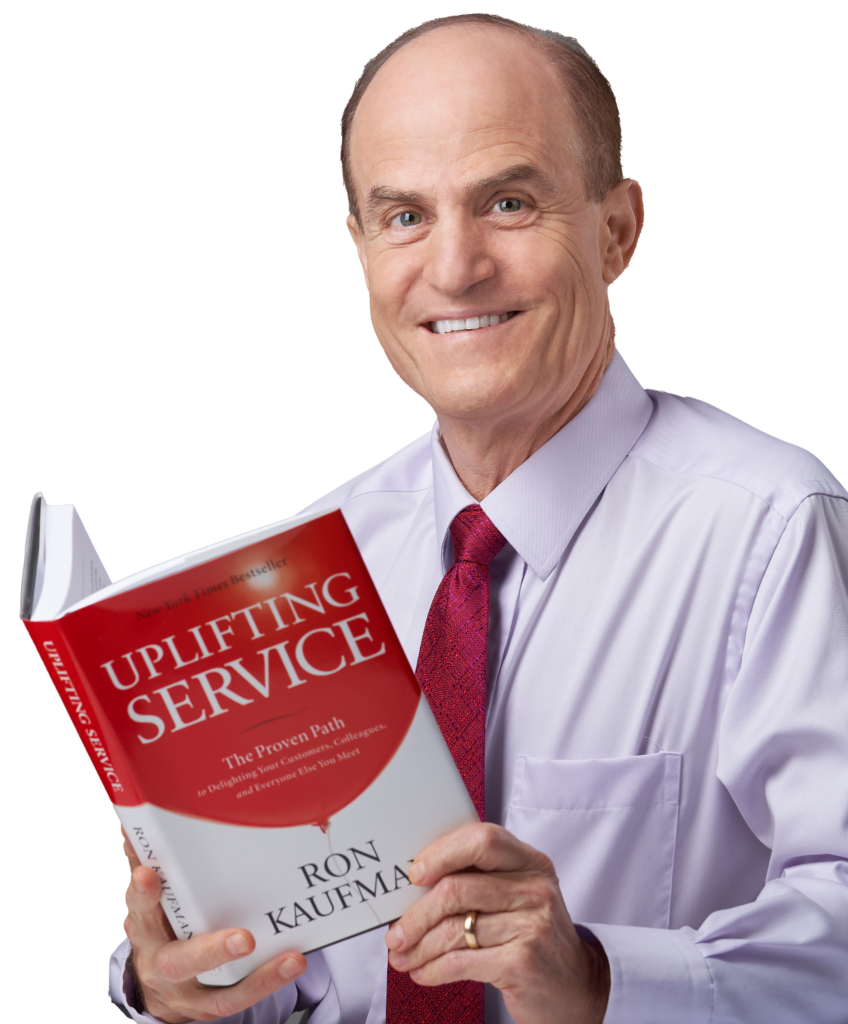This post is from Ron Kaufman’s book, The Joy of Service.

The Consumer to Contributor Continuum
People who live in developed societies are routinely referred to as “consumers.” From a customer service, business and marketing perspective this concept of a compulsive consumer makes sense, because that’s exactly what we are. We consume food, beverages, electricity, gasoline, entertainment, clothing, an ever-growing variety of household gadgets, electronic devices, and other accumulating “stuff”.
“Consumer” is a synonym for “customer” or “shopper”. And in these terms being a consumer doesn’t seem objectionable. After all, few of us grow our own food, make our own clothing, or chop the wood to heat our homes—and neither do our neighbors. Purchasing these necessities (and yes, a fair number of luxuries) is simply part of modern life.
The problem arises when the word “consumer” stops being a word that describes our transaction patterns and instead describes our attitude, our lifestyle, and even our identity. When we find that we’ve become more a compulsive consumer than a conscious contributor, then we’ve lost an essential part of what makes us human. We’ve reduced who we are to what we can buy rather than how we can care, give, or serve—and that’s a huge loss, not a gain.
The Garbage Disposal Lifestyle
Being a compulsive consumer is like being a garbage disposal in the kitchen sink. A garbage disposal unit “eats” whatever is put into it, but it doesn’t give anything back. Stuff goes into its endlessly grinding maw and nothing ever comes back out. (Not that you would want a garbage disposal unit to regurgitate its contents.) The point is, a garbage disposal doesn’t have a reciprocal relationship with anything around it. It’s the ultimate taker.
Isn’t that how we live when we behave as compulsive consumers? We suck in whatever we can afford (or what our credit limit allows us to charge). We wear stylish clothes, eat overpriced meals at trendy restaurants, entertain ourselves with the latest gadgets, upgrade our cars and homes more often than needed, and overwhelm our kids with toys.
When we’re not actively consuming, we’re often thinking about what we want to buy next. And often, our consumption isn’t prompted by genuine need or thoughtful consideration, but by clever marketing which stimulates greed, laziness, desire to keep up with the neighbors, or an insatiable urge to fill our emptiness or cover our unhappiness with more and better “stuff.”
We rarely think about the fact that when we consume we are also in relationship with someone else, whether it’s a manufacturer, salesperson, or customer service provider. Instead, we see our purchases as opportunities to satisfy ourselves, to become happier, to fill a hole in our lives, to one-up the neighbors, or to give our kids an edge. We don’t think about our consumption as a genuine interaction that creates a real impact on others. Often—like the garbage disposal unit—we don’t make any effort at all to give back to the person who sells, provides, or services what we are consuming.
We think that giving them our money is enough to fulfill our obligation. Like a garbage disposal, we are simply “sucking in” what we want and washing it down with money. We don’t focus on—or sometimes even notice—the quality of our human interaction with others. In fact, at our worst, our attitudes and behaviors may even drain energy from those who serve us.
Being a Conscious and Connected Contributor
But this compulsive consumption is not required. We do have a choice, and we must make this choice every day. Instead of unconscious, compulsive consuming, we can choose a mindset of conscious and connected contribution. We can recognize that life is reciprocal and social. We can participate in each of our interactions as an exchange of energy that affects both sides far beyond the products and services purchased, or the money made.
When you choose to be a connected contributor, you recognize the act of consumption itself can be shifted to a more meaningful level by valuing the human element that’s always present in an exchange of goods and services. This mental shift is what changes our attitudes, and this changes our behavior. And changing our behavior is what, quite literally, what changes the world.



